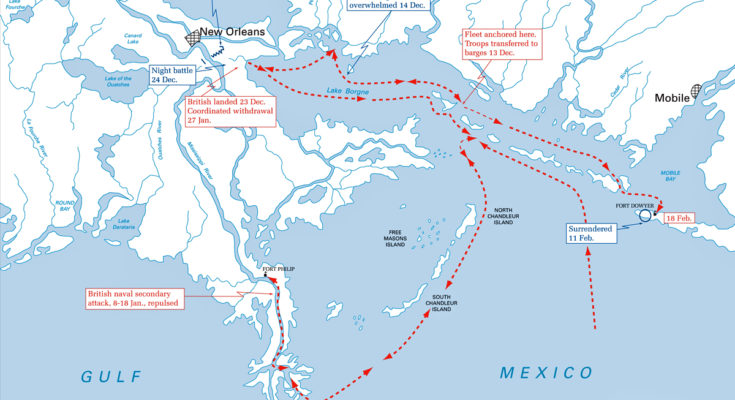Two hundred three years ago, the British faced a choice: attack New Orleans from Lake Pontchartrain, attack by sailing up the river, or attack through the bayous and River Road.
They made the wrong choice — at least for them. For New Orleans, their choice resulted in a victory for the American forces and meant that the city would certainly remain part of the United States.
January 8th is the anniversary of the Battle of New Orleans, fought on Chalmette Battlefield in 1815. It was one of the last major battles of the War of 1812 and part of a larger British campaign to seize the city of New Orleans.
“Louisiana — and particularly the New Orleans area — has always been a target for military activity for almost a century where the adversaries were Spain, France, and Great Britain at various times,” says UNO Ambrose Professor of History Alan Millett. “Everyone agreed that it was a place that whoever held it was at a very strong negotiating position.”
Millett says it was no surprise that the British would try to take New Orleans. The question for American forces was: How?
“Would they go Lake Borgne into Pontchartrain, down the St. John Bayou which was a fairly obvious path,” says Millett. “Could they get up the river? That was a little tough. In fact, the British did something that surprised everybody because it was a lot tougher than anyone imagined, which was try to come over land, basically through the bayous.”
It was winter in New Orleans. The weather wasn’t getting any better. And, the British weren’t getting any more troops. So, Millett says the British chose the tougher, but more expedient plan of attack.
“The decision, made actually by a general named Lambert who was the only one on the field at the time was to cut down through the bayous up from where Lake Borgne is to the river,” explains Millett, “and then pick up some support from British ships that could get up the river and try to assault the city with a naval force up the river and a land force advancing along the river road, which in some ways wasn’t a bad concept — except for the fact that it didn’t work very well in the long run.”
Coming up the river road led the British forces directly into Maj. Gen. Andrew Jackson and his troops at the present site of the Chalmette Battlefield. It was a clear victory for the Americans. According to the Jean Lafitte National Historical Park and Preserve, which oversees the Chalmette Battlefield site, 4,000 Americans troops were waiting for the 7,000 British soldiers. After the fighting was over, fewer than 20 Americans were killed, hurt, or captured compared to more than 2,000 British.
If the British had won and seized New Orleans, the history of the city could have been very different.
“If the Battle of New Orleans had worked out the way the British had wanted it to, New Orleans would probably be a Spanish city, at least for a while,” says Millett.
Because Spain and Great Britain were allies, Millett says there is a possibility the British would have given New Orleans to Spain, which also held nearby Florida. So, the Battle of New Orleans was most likely a battle for the American identity of the city.
“It has a great deal to do with the fact that New Orleans was still part of the United States,” adds Millett. “And, I think it really did solidify a national culture of sorts–national government, national representatives. Louisiana becomes a state fairly rapidly after the war is over.”









